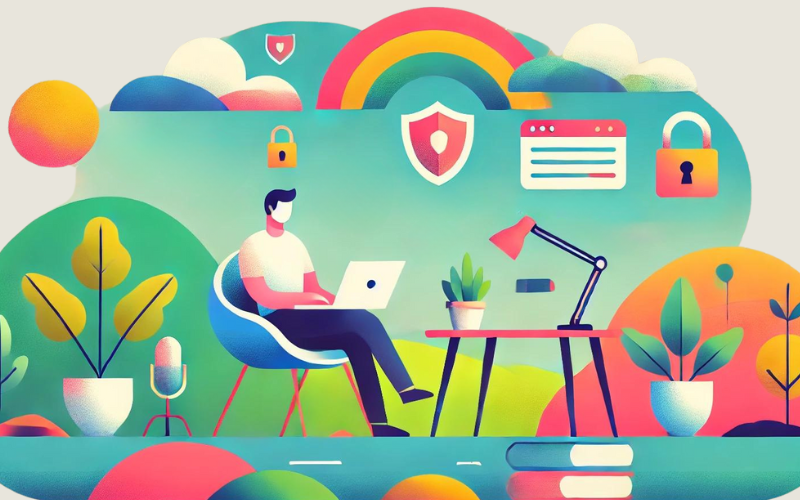


In today’s digital world, safeguarding your personal information online is more critical than ever. With identity theft on the rise and cybercriminals constantly evolving their tactics, protecting yourself has become essential to avoid falling victim to these threats. In this comprehensive guide, we’ll explore the best practices for securing your data online, ensuring your sensitive information remains out of the wrong hands.
Every day, millions of people are at risk of having their personal information compromised. Identity theft can have devastating consequences, including financial loss, damaged credit, and the painstaking process of reclaiming your identity. Protecting your online information isn’t just about avoiding these inconveniences—it’s about maintaining your privacy and security in an increasingly interconnected world.
The first and most straightforward step in protecting your personal information online is by using strong, unique passwords for every account. Many people use the same password across multiple platforms, which is a significant risk—if one account is compromised, all of your accounts could be at risk.
Even if you have strong passwords, adding an extra layer of security through two-factor authentication (2FA) can further protect your accounts. 2FA requires you to provide two forms of verification—typically your password and a unique code sent to your phone or email—before accessing an account. This makes it much harder for hackers to gain access, even if they have your password.
Public Wi-Fi networks in places like coffee shops, airports, and libraries are convenient but often lack the necessary security features to protect your data. Hackers can easily intercept data shared over public networks, exposing your personal information, login credentials, and more.
Phishing is one of the most common tactics used by cybercriminals to steal personal information. Phishing scams typically come in the form of fraudulent emails, texts, or websites that appear to be from legitimate sources, tricking you into revealing sensitive information like passwords, credit card numbers, or Social Security numbers.
Social media platforms are goldmines for cybercriminals seeking personal information. Many people inadvertently share too much online, making it easier for identity thieves to gather data. It’s important to review your privacy settings regularly to ensure you’re not oversharing.
One of the best ways to catch any potential identity theft early is by regularly monitoring your financial accounts. Keep an eye out for any unfamiliar transactions or charges and report them to your bank or credit card company immediately. It’s also a good idea to set up alerts that notify you of any account activity.
Cybercriminals often exploit vulnerabilities in outdated software to gain access to your personal information. By keeping your devices, browsers, and apps up-to-date, you’re closing off potential entry points for hackers.
Many websites and apps request access to your personal information, sometimes more than necessary for their services. Be cautious about sharing your data with third-party services and always read the privacy policies before agreeing to them.
As mentioned earlier, a Virtual Private Network (VPN) is a highly effective way to protect your online activity. A VPN encrypts your internet connection, making it difficult for cybercriminals to track your browsing habits or intercept sensitive information. This is especially useful when using public Wi-Fi or accessing websites that may not be secure.
In case of a cyberattack or data breach, having a secure backup of your personal data can save you from losing critical information. It’s important to back up your files regularly on a secure, offline storage device or through a trusted cloud service.
In today’s digital landscape, protecting your personal information online requires a proactive approach. From using strong passwords and enabling two-factor authentication to being cautious on public Wi-Fi and recognizing phishing scams, there are numerous steps you can take to safeguard your sensitive data.
By following these best practices, you’ll not only enhance your online security but also reduce your risk of falling victim to identity theft. Remember, the key to online safety is staying informed and vigilant—taking the time to secure your personal information can save you from significant headaches down the line.
Copyright © 2025 ・ SafeIDWatch ・ All Rights Reserved